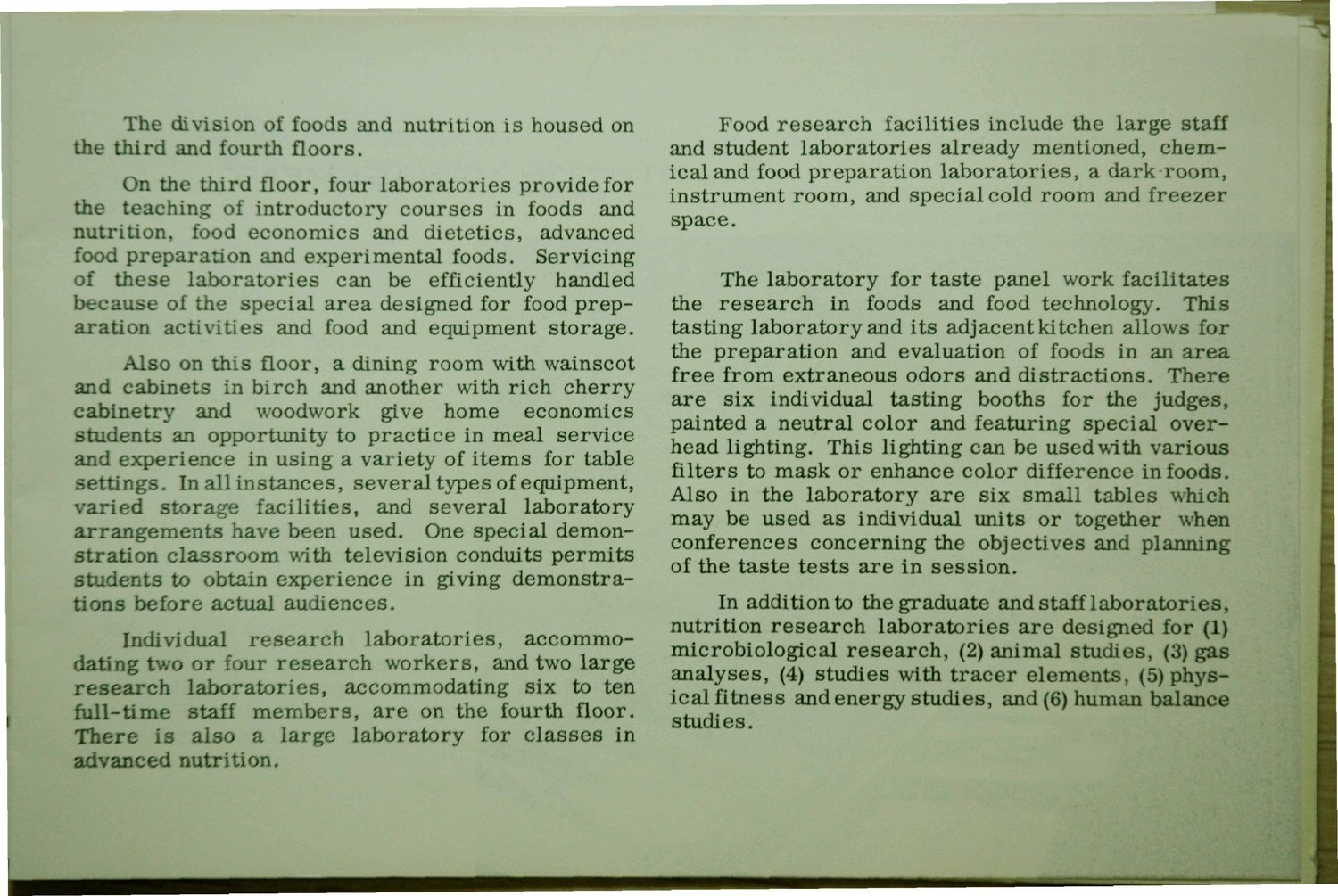| |
| |
Caption: Dedication - Home Economics
This is a reduced-resolution page image for fast online browsing.

EXTRACTED TEXT FROM PAGE:
The division of foods and nutrition i s housed on the third and fourth floors. On the third floor, four laboratories provide for the teaching of introductory courses in foods and nutrition, food economics and dietetics, advanced food preparation and experimental foods. Servicing of these laboratories can be efficiently handled because of the special area designed for food preparation activities and food and equipment storage. Also on this floor, a dining room with wainscot and cabinets in birch and another with rich cherry cabinetry and woodwork give home economics students an opportunity to practice in meal service and experience in using a variety of items for table settings. In all instances, several types of equipment, varied storage facilities, and several laboratory arrangements have been used. One special demonstration classroom with television conduits permits students to obtain experience in giving demonstrations before actual audiences. Individual r e s e a r c h laboratories, accommodating two o r four r e s e a r c h workers, and two large r e s e a r c h laboratories, accommodating six to ten full-time staff members, a r e on the fourth floor. There i s also a large laboratory for classes in advanced nutrition. Food research facilities include the large staff and student laboratories already mentioned, chemical and food preparation laboratories, a dark-room, instrument room, and special cold room and freezer space. The laboratory for taste panel work facilitates the research in foods and food technology. This tasting laboratory and its adjacent kitchen allows for the preparation and evaluation of foods in an a r e a free from extraneous odors and distractions. There a r e six individual tasting booths for the judges, painted a neutral color and featuring special overhead lighting. This lighting can be used with various filters to mask or enhance color difference in foods. Also in the laboratory a r e six small tables which may be used a s individual units or together when conferences concerning the objectives and planning of the taste tests a r e in session. In addition to the graduate and staff laboratories, nutrition research laboratories are designed for (1) microbiological research, (2) animal studies, (3) gas analyses, (4) studies with t r a c e r elements, (5) physical fitness and energy studies, and (6) human balance studies.
| |